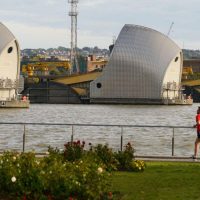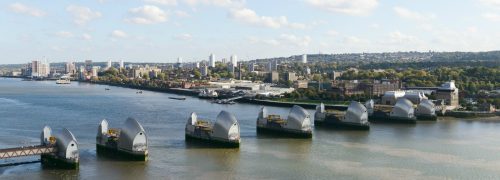
Heritage and history
Five feats of Royal Docks engineering
The Royal Docks were once the largest enclosed docks in the world, a feat of engineering that put London on the map as a leader in port technology. But the area’s innovation prowess did not end there.
In fact, the Royal Docks’ industrial influence continues to this day, as Peruvian Wharf reopened for the first time in 20 years, expected to handle more than 400,000 tonnes of cargo each year. Meanwhile London City Airport is planning pioneering planes through to 2035.
Here we’re taking a closer look at some of the most impressive pieces of engineering in the area, past and present.
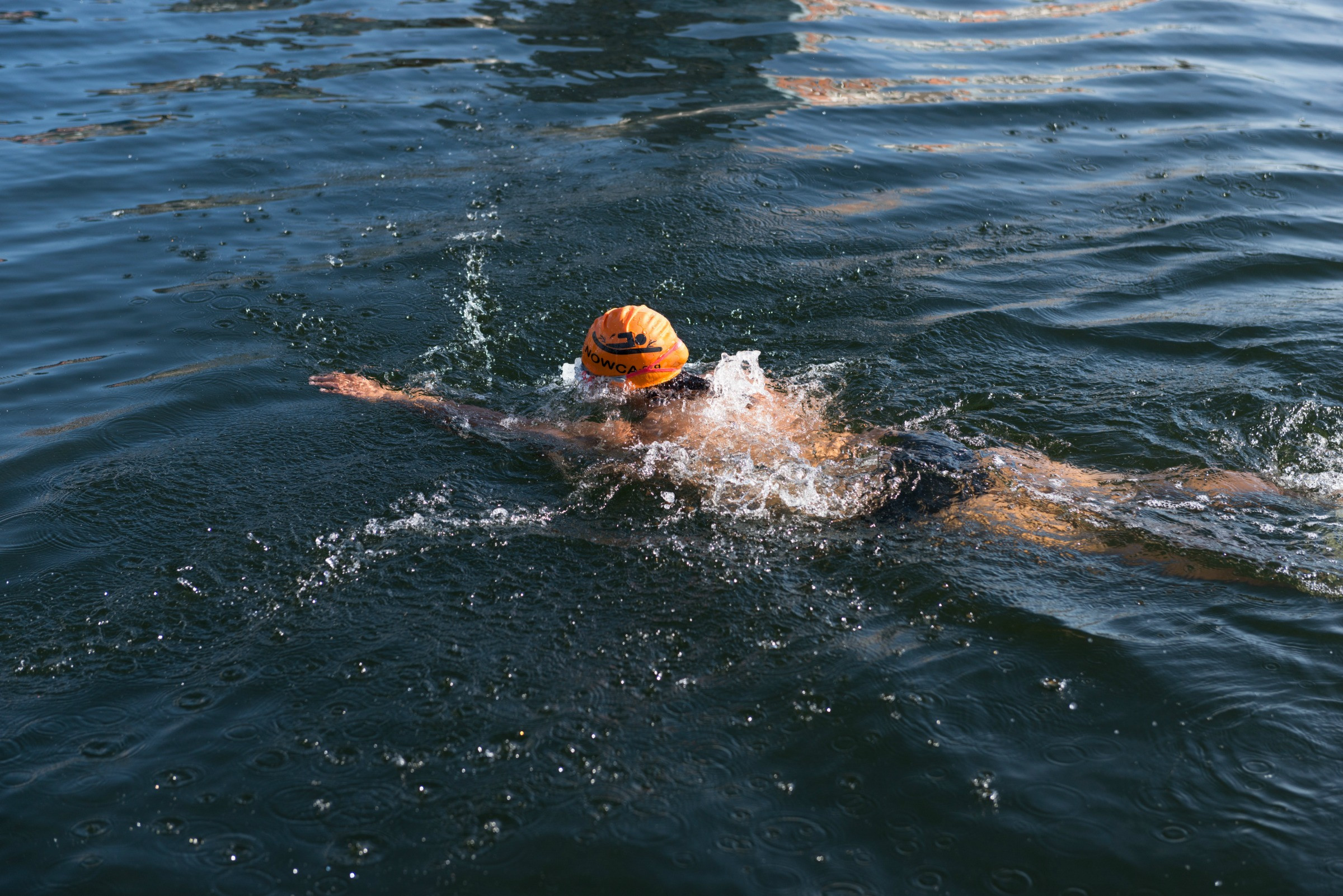
The Royal Docks
The Royal Docks totals 250 acres of water.
Water, water everywhere
The docks themselves are a marvel of Victorian engineering. They’re over four kilometres long, 13 metres deep, and total 250 acres — and this expanse of water is now becoming a playground for wakeboarding and open-water swimming.
Innovation wasn’t confined to the water; the surrounding area was also at the cutting edge of global industry. Royal Albert Dock was the first dock in London to be lit by electricity. The railway lines went right down to the docks, which was highly unusual for the time but led to much faster goods transportation in and out of London. Then there's Compressor House, which was built as a refrigerated store room — perfect for perishable goods coming off the ships.
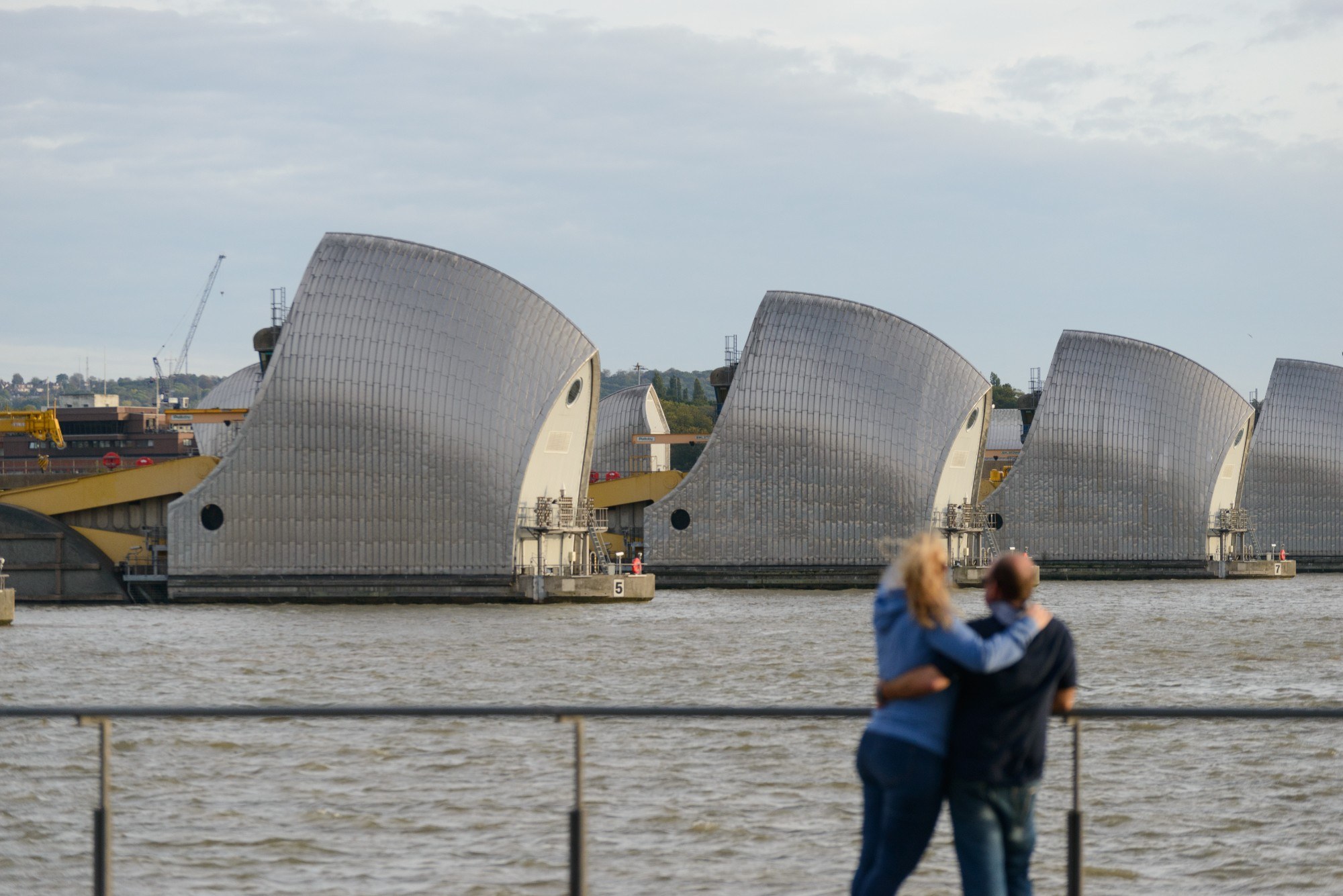
The Thames Barrier
Each of the Thames Barrier’s gates weighs 3,300 tonnes. Photo: Tian Khee Siong.
A river runs through it
Perhaps the most iconic engineering achievement in the area, if not the whole of London, is the Thames Barrier. Spanning 520 metres across the River Thames, each of the ten steel gates weighs 3,300 tonnes, making it one of the largest movable flood barriers in the world. The barrier became operational in 1982 and it closes once a month for maintenance and testing.
What’s particularly impressive is that the mechanism was inspired by the taps on inventor Charles Draper’s gas cooker. It’s easy to see the similarity; the rotating motion allows each section of the barrier to be put into place slowly, working with the current of the water flow at a controlled pace.
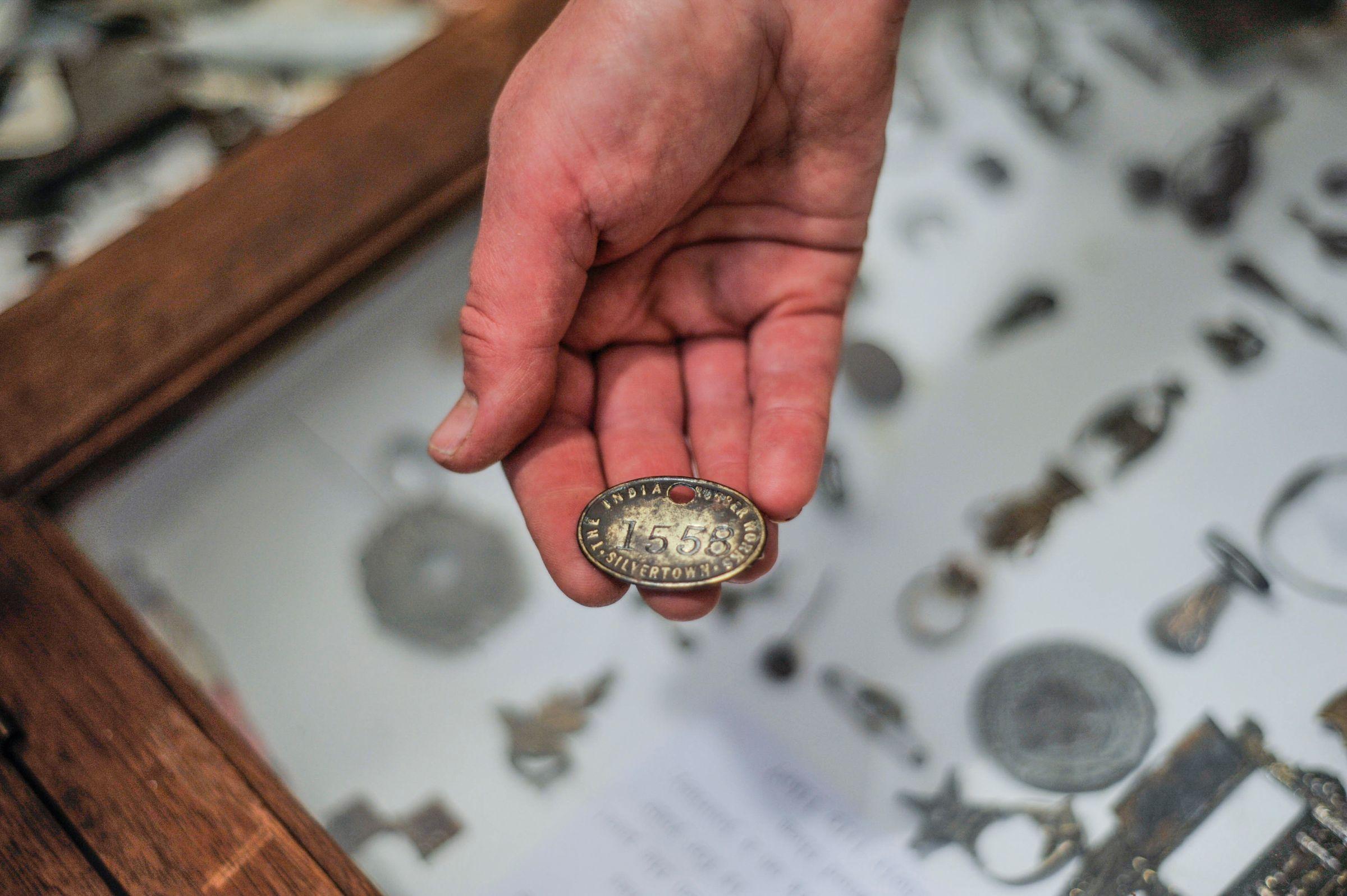
Rubber works
Silvertown played a vital role in the engineering of early submarine cables. Photo by Zachary Ekpe, of mudlarker Nicole White’s collection.
Message received
Being connected to all corners of the world is something we take for granted these days, but it wasn’t always so easy to call your pals in America, let alone WhatsApp them. Laying cables underground was one thing, but laying them under the Atlantic ocean was a huge undertaking. It was also a lucrative one: every company wanted to be the first to make that connection.
The first transatlantic cable was laid in 1975, by Siemens Brothers Telegraph Works based in Woolwich. Over the river, the rubber works in Silvertown moved into the production of gutta-percha, a tough natural plastic made from tree latex, which was essential for submarine cables at the time.
This local area was a key part of the innovation that led to our modern day communication, meaning that we could communicate with across the ocean in a matter of minutes.
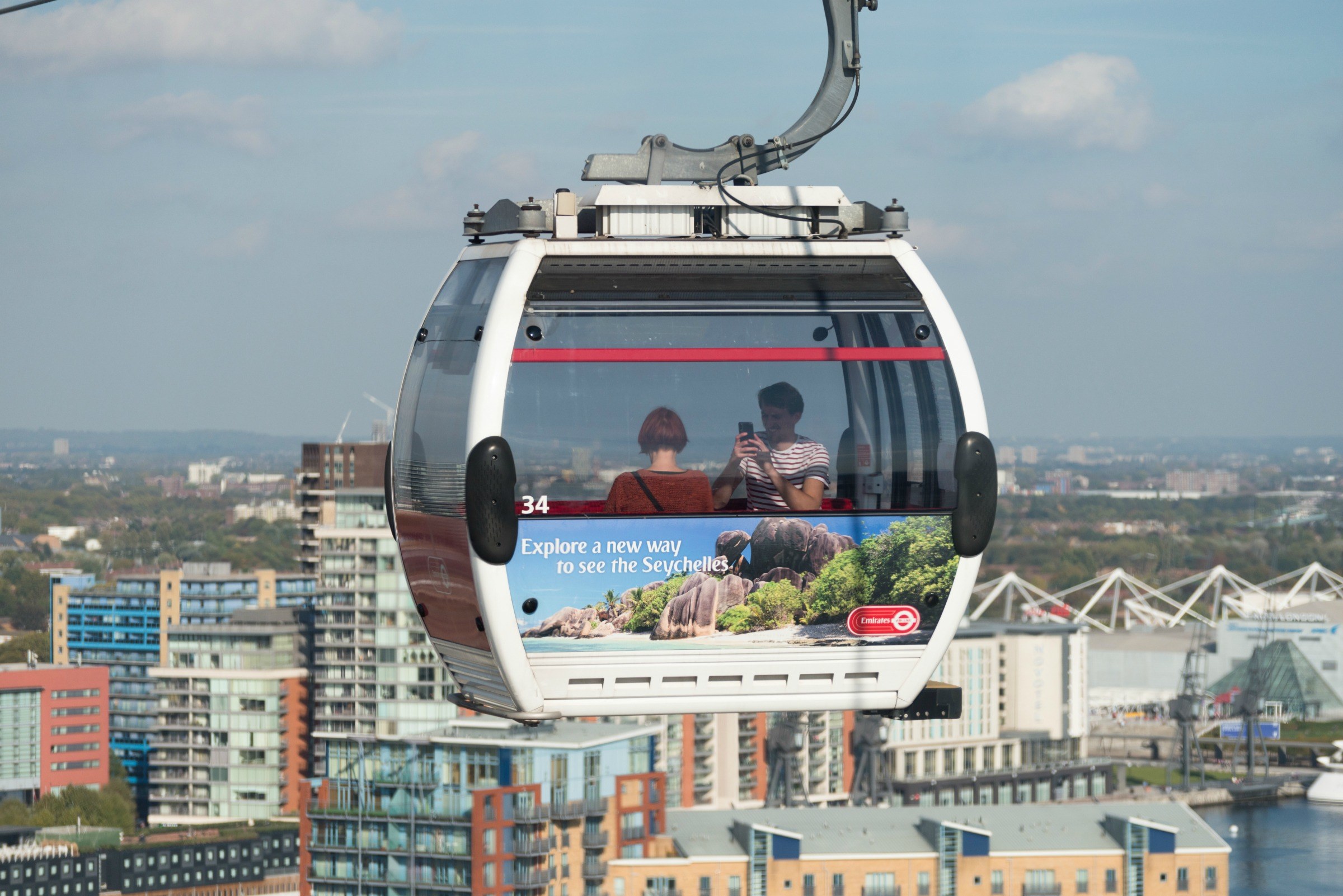
The cable car
At its highest point, the cable car is 90 metres above water. Photo: Tian Khee Siong.
The cable guys
The idea for a cable car across the River Thames actually dates back to when the O2 Arena in Greenwich was the Millennium Dome, but the London cable car that exists today actually opened in 2012 just in time for the London Olympic Games. The IFS Cloud Cable Car — or the Dangleway as it’s affectionately known by Londoners — is a huge draw for tourists and ExCeL London visitors.
It’s often asked why a bridge wasn’t built instead, but the six-lane road bridge that was originally proposed for the spot would have been far more expensive to build, and would have stopped far shorter, only crossing the river at the banks rather than into the Royal Docks. There’s still some boat traffic in the area, so a bridge would have needed to have been very high, while taking the planes from London City Airport into consideration.
Whichever side of the cable you sit, it is undeniably a triumph of engineering. The cable itself is 1,100 metres long, and at its highest point the cars travel 90 metres above the water.
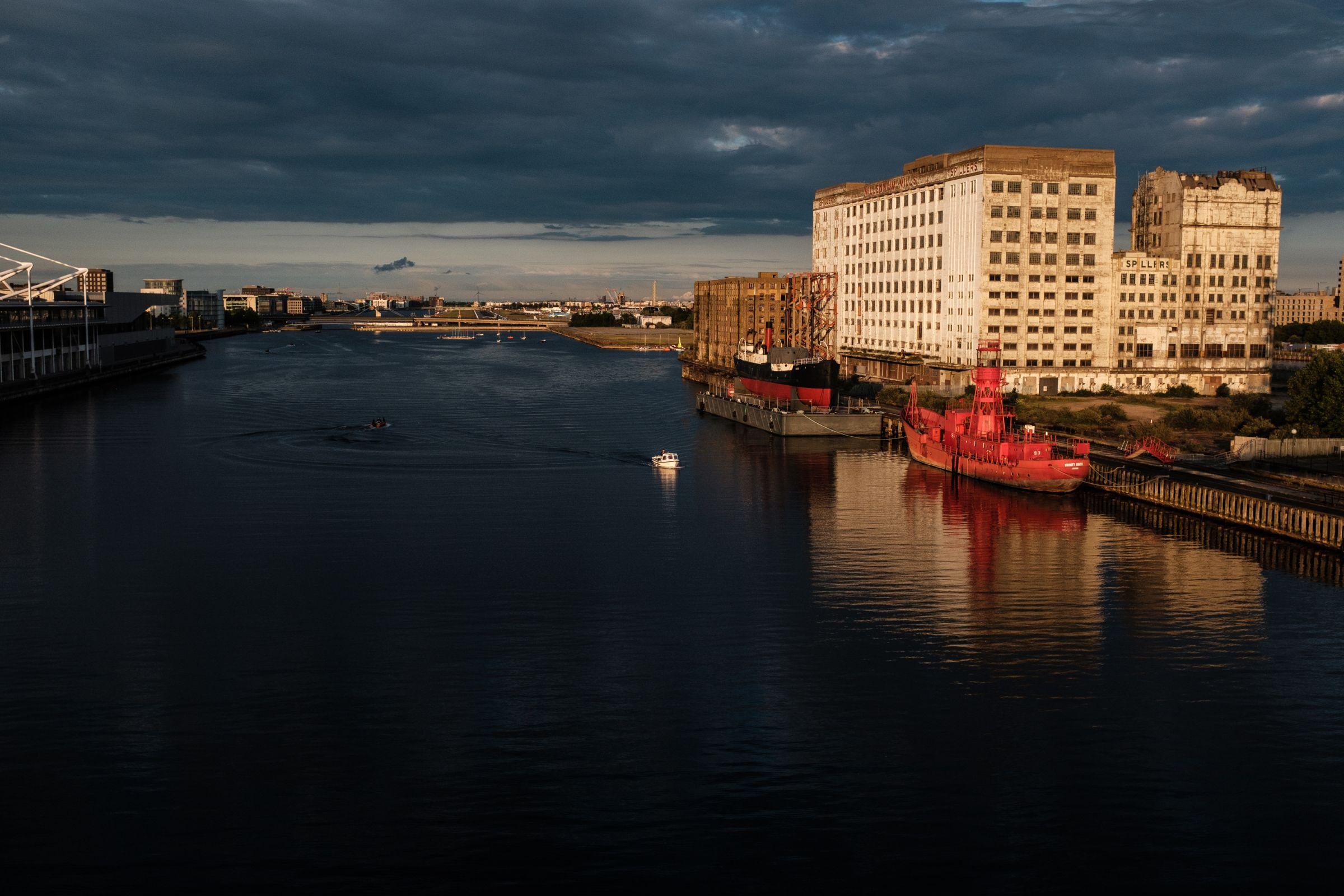
Millennium Mills
The production at Millennium Mills was so large that they could produce 100 sacks of flour every hour. Photo: Kiron Ponnath.
Flour power
Derelict Millennium Mills has become something of a London landmark since its closure in the 1980s, acting as a backdrop for music videos and appearing in several British films and TV shows. However, in its heyday, the mills was referred to as the Battersea Power Station of the Royal Docks. Built in 1905, it was London’s largest flour mill and production levels were huge: the mills were able to produce 100 sacks of flour every single hour and each sack weighed 127 kilograms.
This iconic site is set to be redeveloped into a new community for living and working in the Royal Docks.


